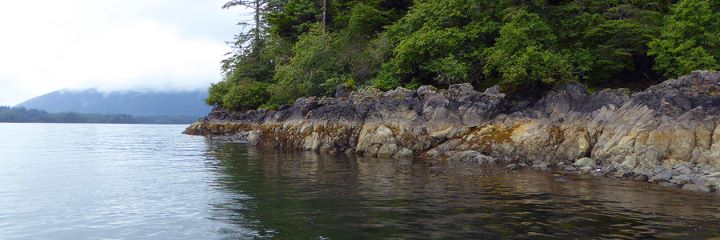Glacier Ice Harvesting

Alaskan Glacier Facts:
- Glaciers cover approximately 28,800 square miles, or three percent of Alaska. This is 128 times the area covered by glaciers in the rest of the United States.
- There are an estimated 100,000 glaciers in Alaska.
- About three-fourths of all fresh water in Alaska is stored in glacier ice.
- The greatest concentration of tidewater glaciers is in Prince William Sound, where there are 20 active tidewater glaciers. Icebergs in Prince William Sound are expected to increase fourfold in the next 20 years as the Columbia Glacier retreats.
- The largest Alaskan glacier is the Malaspina, which is 850 square miles.
Can glacier ice be harvested?
Yes, because glacier ice is water occurring in a natural state, glacier ice harvesters can apply for either a water right or a temporary water use authorization to get authorization to harvest glacier ice. Glacier ice is currently harvested from tidewater-calving glaciers in Alaska.
When is a permit required?
When you harvest a significant amount of glacier ice, a permit is needed from the Department of Natural Resources. If you harvest a significant amount of glacier ice without a permit, you are guilty of a misdemeanor (AS 46.15.180) and (11 AAC 93.035(a),(b).
A significant amount of glacier ice is defined by regulation (11 AAC 93.970(14) as:
- A significant amount of water is that amount of water (or ice equivalent) for which an application for a water right or an application for a temporary water use authorization is required, as described in (b) of this section.
-
A person shall file an application for a water right under
11 AAC 93.040
or for a temporary water use authorization under
11 AAC 93.220 before
- the consumptive use of more than 5,000 gallons of water from a single source in a single day;
- the regular daily or recurring consumptive use of more than 500 gpd from a single source for more than 10 days per calendar year;
- the non-consumptive use of more than 30,000 gpd (0.05 cubic feet per second) from a single source; or
- any water use that may adversely affect the water rights of other appropriators or the public interest.
- A person using less than the amount of water described in (b) of this section acquires no water right or priority unless an application is filed and a permit or certificate is issued under 11 AAC 93.035 - 11 AAC 93.140. The use of water without a permit or certificate is subject to appropriation by others, and the use of water without a water right is subject to curtailment in order to supply water to lawful appropriators of record or to protect the public interest.
The department issues temporary water use authorizations for short-term ice harvesting (a max of 5 years), or a water right for long-term ice harvesting.
When a water right is granted for harvesting glacier ice, it becomes appurtenant to the property in Alaska where the ice is processed, for as long as the water right holder continues to harvest the ice.
Should I apply for a water right or a temporary water use authorization?
If you foresee a long-term use, or there is a lot of competition for the source, you will want to apply for a water right. If you have an established water right, you have legal standing to assert that right against conflicting uses of water or ice with people who do not have water rights. In addition, a person with an established water right has priority to use water or harvest ice over persons who later file for water rights from the same source. A temporary water use authorization does not grant any right or priority to the water user or harvester.
How do I get a water right to harvest glacier ice?
By submitting an application for water rights to the Department of Natural Resources. After public review, you may be issued a permit to begin harvesting ice. However, ice from some glaciers cannot be harvested in quantity, and a permit would not be issued. Once you establish your harvest of the ice for beneficial use, and have met any permit conditions, a Certificate of Appropriation may be issued. Harvesting ice without a permit or certificate does not give the user legal rights to harvest ice, no matter how long the ice harvest has occurred – and it may be against the law.
How do I get a temporary water use authorization to harvest glacier ice?
A temporary water use authorization is required for significant short-term water uses, including glacier ice harvesting, which last less than 5 years. This permit does not establish a water right but may help avoid conflicts with fish, wildlife, other resource users, or existing water right holders.
Download an Application for Temporary Water Use
Applications must be accompanied by the required filing fee, and should include a map and legal description of the place where the ice will be harvested, the quantity of ice to be harvested, the time it will be harvested, and the type of equipment to be used to harvest the ice.
What costs are involved?
There is an application filing fee for both water rights and temporary water use authorizations. You are also required to pay the cost of a legal advertisement in at least one issue of a local newspaper in the area near the proposed ice harvest, in the case of an application for a water right. In addition, permit and certificate (including temporary water use permit) holders are subject to an annual $50 water right administrative service fee.
